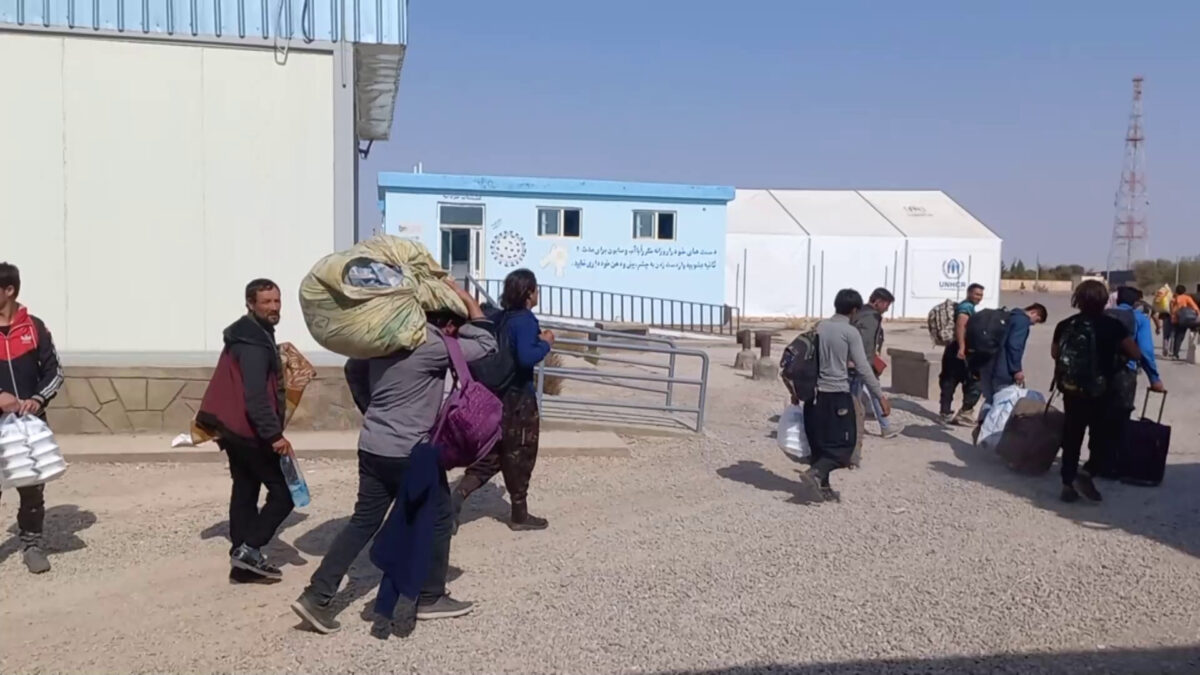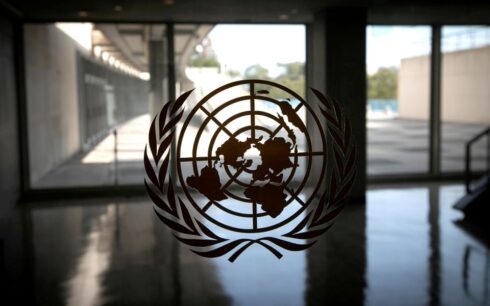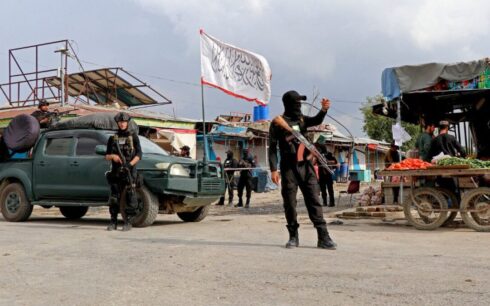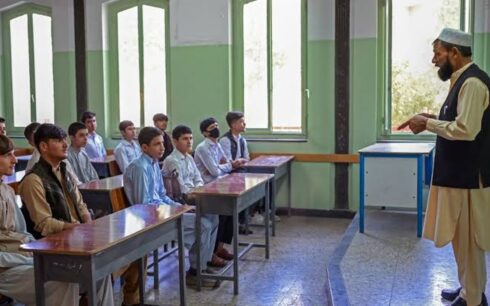A new study conducted by Amu TV reveals that widespread unemployment and economic hardship are the primary reasons behind illegal migration among Afghan citizens, with more than 40 percent of respondents citing these factors as their motivation for leaving the country.
The study, carried out in seven provinces, interviewed 33 individuals, including women, all of whom had personal experience with illegal migration. Of those surveyed, 45.4 percent said they were forced to migrate due to the worsening economic situation in Afghanistan, while another 33.3 percent pointed to unemployment as their main driver.
An additional 9 percent said that fears of insecurity and a potential resurgence of violence following the Taliban’s return to power pushed them toward illegal migration.
One participant described how dire the economic conditions were: “We had no other option. There were no jobs, no opportunities. We either stayed and starved, or we left.” Another cited a looming sense of insecurity: “When the Taliban returned, we feared that war could break out again, and I wanted to ensure my family’s safety.”
Illegal migration routes chosen due to financial barriers
When asked why they opted for illegal migration despite the presence of legal pathways, 30.3 percent of respondents said the costs associated with legal migration—specifically travel expenses and passport fees—were prohibitively high. Another 15.1 percent mentioned the difficulty in obtaining passports as a major barrier, while 6.1 percent noted that illegal routes were significantly less expensive.
The study highlights the high costs that often accompany migration through legal channels. One respondent explained, “We couldn’t afford the visa, the passport, or the official processing fees. The illegal route was the only option left for us.”
In contrast, 9.1 percent of participants offered other reasons for their choice, including the complexity of legal migration processes, a lack of awareness about legitimate routes, and the higher costs typically associated with legal options. Notably, close to 40 percent of respondents did not provide a specific answer when asked about their reasons for choosing illegal migration over legal pathways.
Key findings from the study include:
45.4 percent cited economic hardship as their primary reason for illegal migration.
33.3 percent blamed unemployment.
9 percent migrated due to fears of insecurity and a potential war following the Taliban’s return to power.
9 percent sought a better life abroad.
3.3 percent did not provide a clear response.
Among those who chose illegal migration despite legal alternatives:
30.3 percent cited a lack of funds for travel or obtaining a passport.
15.1 percent said they struggled to obtain passports or faced difficulties in the application process.
6.1 percent said illegal migration was less costly.
9.1 percent mentioned other reasons, such as the difficulty and higher expense of legal migration or lack of information.
Nearly 40 percent did not offer a specific answer.
How migrants connect with human traffickers
The study also delved into how individuals connected with human traffickers. According to the findings, 27.2 percent of participants said they were introduced to trafficking networks through friends or relatives who had previously migrated. Another 21.2 percent found traffickers in border areas as they attempted to cross into neighboring countries.
A further 12.1 percent discovered trafficking networks through groups operating at hotels or transportation hubs, such as bus terminals. One participant recounted, “We met people at a bus station who arranged everything for us—from the border crossing to reaching the destination.”
Meanwhile, 18.1 percent said they connected with traffickers through social media or local contacts. “There are entire networks on Facebook and WhatsApp dedicated to helping people cross the border illegally,” said one respondent. Another 12.1 percent said they obtained contact information for traffickers directly, while 9.1 percent did not respond to the question.
Key findings on how migrants connect with traffickers include:
27.2 percent were introduced to traffickers through friends or relatives.
21.2 percent encountered traffickers at border areas.
12.1 percent made contact through groups operating at hotels or bus terminals.
18.1 percent connected through social media or local contacts.
12.1 percent obtained contact information directly.
9.1 percent did not provide an answer.
Personal stories of illegal migration
To further illustrate the human impact behind these statistics, the study gathered testimonies from migrants who had recently returned to Afghanistan after attempting illegal migration. Their stories paint a stark picture of the hardships endured during the journey and the difficult conditions that await them upon return.
Behzad, one of the participants, had recently returned from Iran after a failed migration attempt. “I spent everything I had to make the journey, only to come back empty-handed,” he said. “We paid a million tomans each month just for rent, working day and night for wages that barely covered our costs. In the end, we gave the traffickers 18 million tomans for a journey that brought us nothing but misery.”
Another returnee, Setareh, who had lived in Iran for ten years, described the discrimination and economic struggles her family faced as Afghan migrants. “Life in Iran was tough. Renting a house was difficult, and whenever we needed medical care, we were treated differently because we were Afghans. Eventually, the financial strain became unbearable, and we had no choice but to return to Afghanistan.”
Women, too, bear the brunt of the hardships associated with illegal migration, often facing both economic and personal challenges. Shukria, another participant, explained, “The economic situation in Afghanistan is dire. There’s no work, so we’re forced to leave. We spent five months in Iran, but after enduring so many difficulties, we had to come back.”
The dangerous route to Europe
For many Afghans, illegal migration is not limited to neighboring countries like Iran. Some embark on the dangerous journey to Turkey, which many see as the gateway to Europe. However, this route presents its own set of risks, with migrants facing harsh conditions and numerous obstacles along the way.
Shoja, who attempted to reach Turkey through Iran, described the challenges he faced. “We went to Iran for economic reasons, hoping to make it to Turkey. We spent six or seven months in Iran, but when we tried to cross into Turkey, the Turkish police caught us. They took everything we had, and we were forced to return to Afghanistan with nothing.”
Reza, another participant, echoed these sentiments. “Most young people head to Turkey through Iran, but the border is brutal. Afghan migrants are often treated harshly, and many are killed. I spent a year trying to reach Turkey, but in the end, I had to come back, and now I’m unemployed again.”
The toll of illegal migration
For those who survive the journey, the risks do not end at the border. According to those interviewed, many migrants disappear in the vast deserts along the Afghanistan-Iran border, never to be heard from again. “If there were jobs in our country, we wouldn’t leave,” said Sarwar, a migrant. “But because there’s no work, we turn to illegal migration, facing countless problems along the way. Some never make it back.”
Despite the risks, poverty and unemployment continue to drive many Afghans toward illegal migration. Human traffickers, operating in the shadows, exploit the desperation of those seeking a better life. For many, the dream of a better future remains elusive, overshadowed by the harsh realities of migration and the challenges of life back home.





